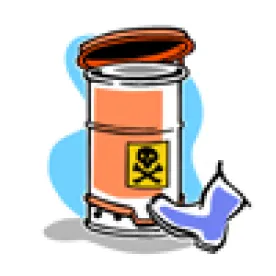President Obama just signed a bill amending the Toxic Substances Control Act (“TSCA”), changing the way the EPA regulates chemicals. For the last 25 years, the EPA has regarded TSCA’s principal control provision as unworkable and refused to rely on it after an adverse ruling in response to the EPA’s effort to regulate asbestos. The amended TSCA makes it easier for the EPA to test, evaluate, and regulate chemicals. Furthermore, the EPA will now be required to review the safety of every chemical in commerce. In a nutshell, the new law makes the following changes:
1) The TSCA inventory contained more than 84,000 chemicals, but only a fraction of them are in use today. The new law introduces an inventory reset provision, requiring identification of chemicals that are now, or were recently, in commerce, so that the EPA can focus its attention on these active chemicals. As a result, the EPA may require that manufacturers and processors report the chemicals they have manufactured and/or processed in the last 10 years as active substances.
2) The EPA may now issue orders requiring manufacturers and processors to conduct testing for toxicity or environmental fate. This permits the EPA to bypass the previously protracted process of imposing testing by rulemaking.
3) Rather than presume that every chemical is safe, the EPA is required to develop a screening process for existing chemicals to evaluate any risks. The EPA must identify high priority substances for testing, and evaluate them based on the health and environmental risks they pose, without regard to costs and other non-risk factors. The EPA must also publish the scope of the risk assessment that it will undertake.
4) The new law changes the risk management standards, giving the EPA broader authority to impose regulations on chemicals. The amended TSCA replaced the previous “least burdensome requirements” standard with an “unreasonable risk of injury to health and the environment” guideline. This change is due to the court’s decision in Corrosion Proof Fittings v. EPA, 947 F.2d 1201 (5th Cir. 1991) invalidating EPA’s ban on asbestos, concluding that EPA failed to satisfy the “least burdensome requirement” with its asbestos ban.
5) If a high priority chemical is deemed unsafe under the conditions of use, the EPA may subject that chemical to use restrictions, or may ban it altogether.
6) New chemicals cannot enter commerce until the EPA makes a public determination of their safety in accordance with the TSCA standards.
7) The EPA is now authorized to collect higher fees. Fees will be assessed on manufacturers and processors who are subject to a testing requirement, who submit notices of their chemicals, or that manufacture or process a chemical that is subject to a risk evaluation. These fees defray up to 25 percent of the costs of implementing the new chemical notification, risk evaluation, and confidential information review program. However, when a manufacturer requests an EPA review of its chemical, depending on the chemical, the manufacturer could pay as much as 100% of the EPA’s costs for conducting the review.
8) The amended TSCA preempts state laws from regulating toxic substances that are regulated or evaluated by the EPA. The new law further places a pause on state regulation of high priority substances that are currently undergoing testing. However, the bill provides an exception to preemption if, for instance, a state has received a waiver, or if the state regulatory law was passed before April 2016.



 />i
/>i

